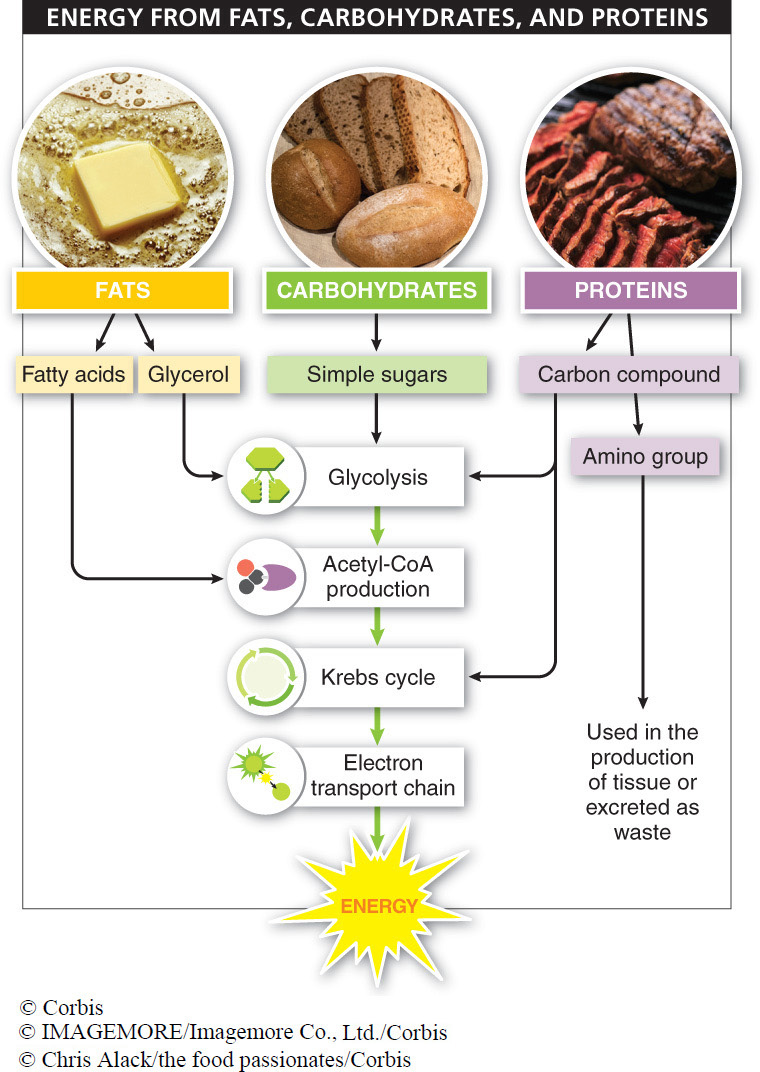Most automobiles can run on only one type of fuel, gasoline. If you run out of fuel and cannot get to a gas station, you are out of luck. In this chapter, we have examined the steps by which plants, animals, and other organisms use glucose as fuel. But living organisms are more flexible than cars when it comes to fuel sources. They also have more complex needs because their fuel must provide not only energy but also the raw materials for growth.
If a person has a low-
Evolution has built humans and other organisms with the metabolic machinery that allows them to extract energy and other valuable chemicals from proteins, fats, and a variety of carbohydrates (FIGURE 4-39). For that reason, we are able to consume and efficiently utilize meals comprising various combinations of molecules.

Sugars. In the case of dietary carbohydrates, many are polysaccharides—
Lipids. Dietary lipids are broken down into their two constituent parts: a glycerol molecule and fatty acids. The glycerol is chemically modified into one of the molecules produced during glycolysis. It enters the glycolysis pathway at that step and is broken down to yield energy. The fatty acids, meanwhile, are chemically modified into acetyl-
Proteins. Proteins are chains of amino acids. After consumption, the chains are broken down chemically, then each amino acid is broken down into (1) an amino group that may be used in the production of tissue or excreted in the urine, and (2) a carbon compound that is converted to one of the intermediate compounds in glycolysis or the Krebs cycle, allowing the energy stored in its chemical bonds to be harnessed.
In the end, humans (indeed, all animals) are able to harvest energy from a variety of food sources beyond simple glucose. Whether a meal contains carbohydrates, lipids, proteins, or some combination thereof, the nutrients are chemically modified in some preliminary steps and then fed into one of the intermediate steps in glycolysis or the Krebs cycle to furnish usable energy for the organism (see Figure 4-39).
TAKE-HOME MESSAGE 4.18
Humans and other organisms have metabolic machinery that allows them to extract energy and other valuable chemicals from proteins, fats, and carbohydrates in addition to the simple sugar glucose.
The metabolic machinery of a cell is able to extract energy from what types of molecules besides glucose?
Other carbohydrates, proteins, and fats also can be broken down to yield energy. This breakdown is accomplished by either converting these molecules into glucose or converting them into some intermediate molecule in glycolysis or the Krebs cycle.
170